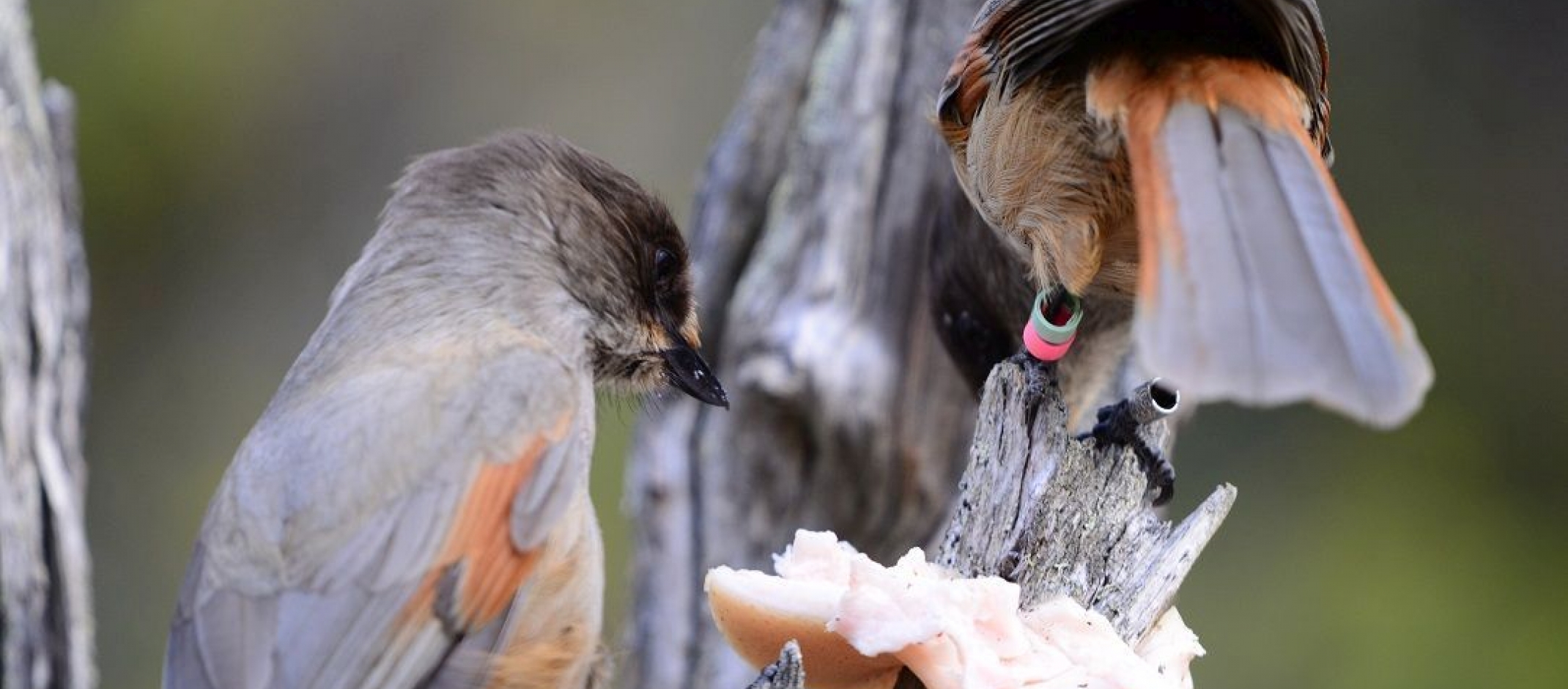Trust among corvids

Siberian jays are group living birds within the corvid family that employ a wide repertoire of calls to warn each other of predators. Sporadically, however, birds use one of these calls to trick their neighbouring conspecifics and gain access to their food. Researchers from the universities of Konstanz (Germany), Wageningen (Netherlands), and Zurich (Switzerland) have now examined how Siberian jays avoid being deceived by their neighbours. The study, published in the journal Science Advances, shows that these birds have great trust in the warning calls from members of their own group, but mainly ignore such calls from conspecifics of neighbouring territories. Thus, the birds use social information to differentiate between trustworthy and presumably false warning calls. Similar mechanisms could have played a role in the formation of human language diversity and especially in the formation of dialects.
Deception and lies
Deception and lies are surprising aspects of human communication and the use of language in which false information is intentionally communicated to others, allowing an individual to gain an advantage over the recipient of such false information. However, language is actually highly pro-social and cooperative and is mainly used to share reliable information. Thus, language can only function properly and be maintained if deception is kept to a minimum or other mechanisms are in place to recognize and avoid deception.
People do judge the reliability of communication partners based on personal experience. “If someone repeatedly lies to you, you will most likely stop trusting this person very quickly,” says Dr Michael Griesser, a biologist at the University of Konstanz. Griesser authored the study together with Dr Filipe Cunha, whose doctoral thesis he supervised. But do we observe deception in animals as well, and, if so, which mechanisms do animals use to avoid being deceived?
Warning calls of the Siberian jay
Indeed, a number of species are able to deceive their conspecifics, including some species of primates and birds like the Siberian jay (Perisoreus infaustus). Siberian jays live in territorial groups and have an elaborate communication system: A wide range of calls allow them to warn each other of the presence of different predators as well as the behaviour of their fiercest enemy, the hawk.
Occasionally, however, neighbours intruding into a group's territory use the same calls that would otherwise indicate the presence of a perched hawk for a different purpose. Their aim is to deceive the members of the group about the presence of the predator, thus scaring them away to get access to their food. “It is a commonly observed phenomenon in the animal kingdom that warning calls are used to deceive others. Clearly, the recipients of the false information potentially pay a high price if they ignore the warning,” says Cunha.
Only trust those you know?
To find out how Siberian jays identify and respond to this type of deception, the researchers examined a population of wild Siberian jays in northern Sweden. They attracted experienced individuals to a feeding site and recorded video footage of what happened. As soon as such an experienced individual visited the feeder, a loudspeaker played recordings of Siberian jays' warning calls designating a perched hawk. These calls were recordings from former members of the visitor’s own group, birds from neighbouring territories, or birds that the visitor had never encountered before. Using the video recordings, the researchers measured how long it took the visitor to leave and return to the feeder.
https://youtu.be/SU2Uc6a9PG8
https://youtu.be/YLSW2pApS0s
These “playback experiments” demonstrated that experienced Siberian jays responded quicker and took longer to return to the feeder when hearing warning calls of a former member of their own group than when exposed to warning calls of neighbouring groups or previously unknown individuals. “Siberian jays thus have a simple rule to avoid being tricked: They only trust the warning calls from members of their own group, meaning cooperation partners. Familiarity alone is not enough, otherwise the birds would also have trusted the calls of their neighbours,” Griesser explains.
Deception as a possible factor in language and dialect formation
Michael Griesser draws a comparison to humans and their languages and dialects. Just like Siberian jays, humans preferentially trust others who belong to the same group as themselves and therefore more likely are cooperation partners. “It could thus very well be the case that vulnerability to deception has been a driver of the rapid diversification of human languages and facilitating the formation of dialects as they allow the identification of local cooperation partners,” Griesser considers.
The project received funding from the Swiss National Science Foundation, via the EU Framework Programme for Research and Innovation, Horizon 2020, from the University of Zurich and the Science Without Borders Programme in Brazil.
